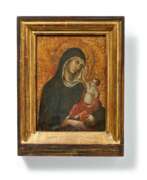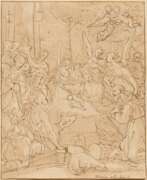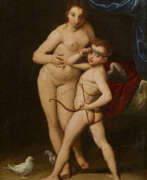Sienese School

Sienese School
The Sienese School of painting, a significant movement in the history of art, flourished in Siena, Italy, primarily between the 13th and 15th centuries. This school is renowned for its distinctive style, which sets it apart from other Italian art movements of the time, particularly the Florentine School.
The foundation of the Sienese School is attributed to Duccio di Buoninsegna, a master painter whose works combined the formal aspects of the Italo-Byzantine tradition with the emerging Gothic style's spirituality. Duccio's most celebrated work is the Maestà, an altarpiece for the Siena Cathedral, exemplifying his unique approach to art.
Among the notable figures of this school, Simone Martini stands out. His work, known for its elegant naturalism and richly detailed surfaces, played a pivotal role in shaping the International Gothic style, a movement that influenced courtly art across Europe. Another pair of significant contributors to this movement were the Lorenzetti brothers, Pietro and Ambrogio. They are particularly recognized for their advanced use of spatial settings and perspective, a skill likely influenced by their study of Giotto's work.
Sassetta, Giovanni di Paolo, Neroccio de’ Landi, Matteo di Giovanni, and Beccafumi were other key artists who contributed to the Sienese School. They maintained the tradition established by their 14th-century predecessors while integrating inspirations from Florentine art.
The Sienese School's paintings are known for their rich color harmonies and interest in detailed, genre-like elements. The deeply expressive nature of their work often reflects the sculptural influences of their time, particularly those of Giovanni Pisano, who was active in Siena. Ambrogio Lorenzetti's works are particularly notable for being among the first in Europe to employ single-point perspective.
For art collectors and experts, understanding the Sienese School of painting is crucial for appreciating the evolution and richness of Italian art. Its unique style, characterized by elaborate ornamentation, vivid colors, and a deep spiritual quality, offers a distinct contrast to the more naturalistic trends of the Florentine School.
For those interested in staying updated on sales and auction events related to the Sienese School of painting, signing up for updates can be an excellent way to remain informed about this fascinating area of art history.
| Country: | Italy |
|---|---|
| Start of the period: | 1251 |
| End of the period: | 1650 |




